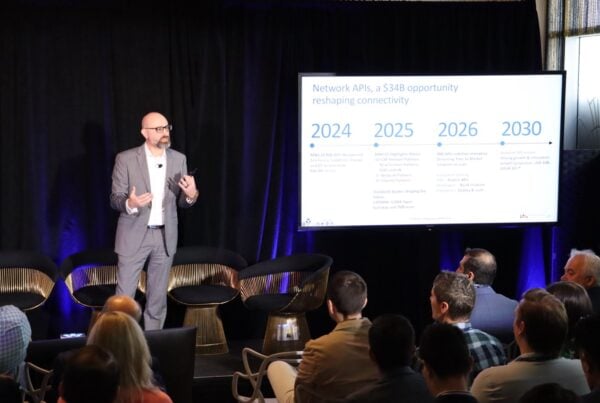The widespread distribution of the internet and mobile devices means that more and more consumers are able to perform transactions, interact with their banks or simply book a holiday online, wherever they are, whenever they want. As consumers we expect this spontaneity. Simple transactional processes are played out on every device, every day by nearly everybody. Hackers, bots and identity theft sit uncomfortably alongside the increased use and freedom to use transactional services. And in general, all that protects consumers is a few characters and numbers that are tapped in to the password field on any given digital screen. Below, Stacy Adams, VP of Marketing at application-to-person mobile messaging provider, Mblox shares insights on two-factor authentication and mobile’s growing role within it.
What is Two-Factor Authentication?
[youtube=https://www.youtube.com/watch?v=aoltKPb_bDc&w=400&align=right&rel=0]Tom Cotney, CEO & Rob Malcolm, SVP Commercial Operations at MWC in Barcelona, March 2015
You probably already use two-factor authentication (2FA) in your everyday life – when you’re online shopping or accessing your bank account online.
2FA adds another step to the log-in process besides only entering your username and password. This enables the company to identify the user as a human instead of a robot. If you think about it, for companies that are really trying to protect your data, this two-step login process is absolutely necessary.
According to research by OnlineMBA.com, hackers can crack an 8-character all-lowercase password within two hours. And according to Experian, 66 percent of people report using the same password for multiple accounts. If that password were to be compromised, many people would be at an extremely high risk for fraud and identify theft.
The second factor in the 2FA process could be anything from a personal PIN to a credit card number to a fingerprint and is meant to add another level of security. While 2FA is nothing new in the digital world, it’s becoming more commonplace as companies look to increase security measures. Although 2FA does improve security, it is important to assess a businesses’ users and potential threats in order to identify the correct 2FA solution for that specific business.
Leveraging SMS for 2FA
VP of Marketing
Mblox
There are many different forms of 2FA, but Mblox is seeing a growing trend of large companies using messaging as an authentication method. The user enters their mobile phone number and the site generates a one-time temporary password and shares that with the user through a text message sent to their mobile phone.
2FA via SMS is a huge growth opportunity for the application-to-person (A2P) messaging industry for several reasons. One benefit of using SMS-based authentication is that consumers almost always have their mobile phone on them so it’s a very easy way to provide confirmation that the user is human. Additional benefits include reduced risk, because the passwords expire after one use, and it eliminates the need to remember passwords, as a new one is generated every time.
MEF’s 4th Annual Consumer Trust Summit takes place in New York on June 24th. The theme of the event is “Trust as a business critical issue” – attendees will hear global perspectives on mobile privacy and get updates on regulation and it’s impact on your business, how to construct a business case for best practice privacy in the mobile ecosystem, and dealing with sensitive information-health, location and children & privacy.






One Comment